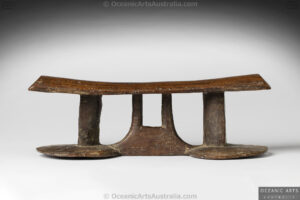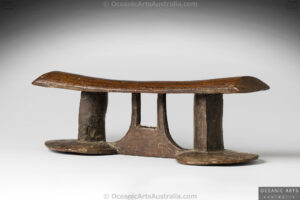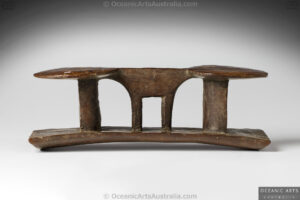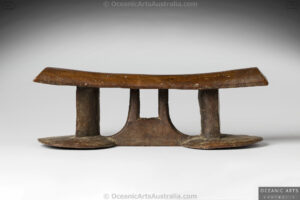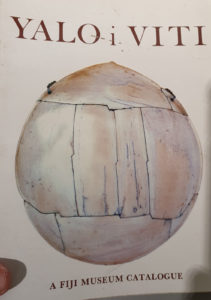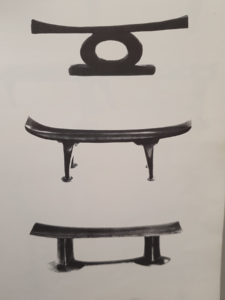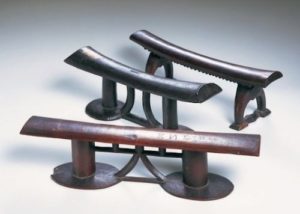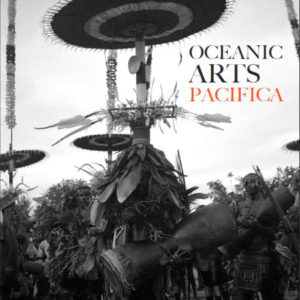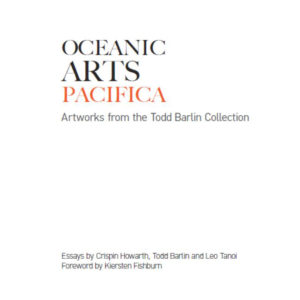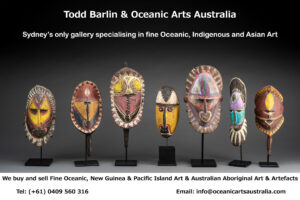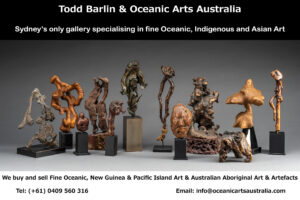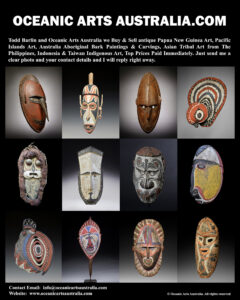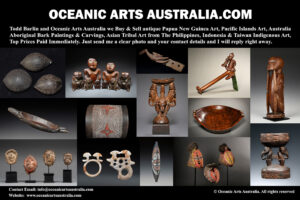A Superb Old Fijian Chief’s Headrest / Neckrest 19th Century Polynesia
| Collection No. | TB-2750 |
|---|---|
| Size | Length 39cm x Height 12cm |
A Superb Old Fijian Chief’s Headrest / Neckrest 19th Century Polynesia
This a very rare type of Fijian Headrest or Neckrest is from the 19th Century. The Headrest two large round feet & open work bar between them, the feet are not flat at all being that the headrests were used on bamboo floors covered with traditional mats that also were not flat. Made from a hard heavy reddish coloured wood probably vesi.
The headrest is imbued with an especially significant spirituality because of its association with the mystical aura of sleep. Sleep was recognized as the most intimate relationship with the spirit realm, therefore the decoration on headrests was especially intertwined with their spiritual beliefs. Furthermore, the human head is associated with concepts of power, therefore anything that was created to support this power was subsequently revered.
I was only able to find a couple of similar Neckrests, one in the Fijian National Museum catalogue ” Yalo i Viti ” 1986 on page 41 (see photo above) the bottom Neckrest also has two large round feet connected by a flat bar between the feet. The Description reads ” Kali Headrest Height 13.4 x 46cm length. FM # 90.108 Presented by John Goepel; Headrest of Ritova, Tui Macuata one of the Chiefs who signed the Deed of Cession whereby Viti became a British Colony of 10 October 1874. There is one other photo above that shows another style of Headrest with two large round feet.
In Fiji, headrests were reserved for chiefs and their head was regarded as sacred and should not be allowed to touch the ground. The Headrests also helped to protect their elaborate hairstyles while sleeping and also, they kept the head cool at night
The abstract form, balance, and grace of this carved headrest show the sophisticated craftsmanship in Fijian art.
Provenance: The Todd Barlin Collection of New Guinea & Polynesian Oceanic Art

